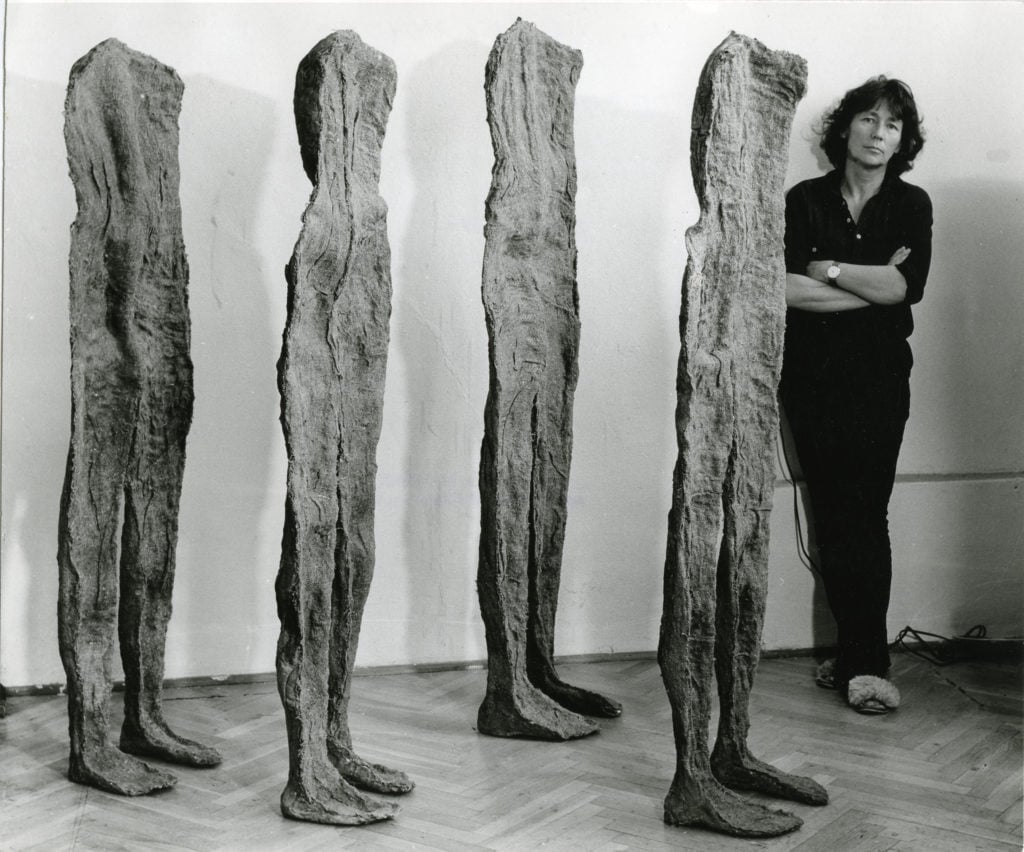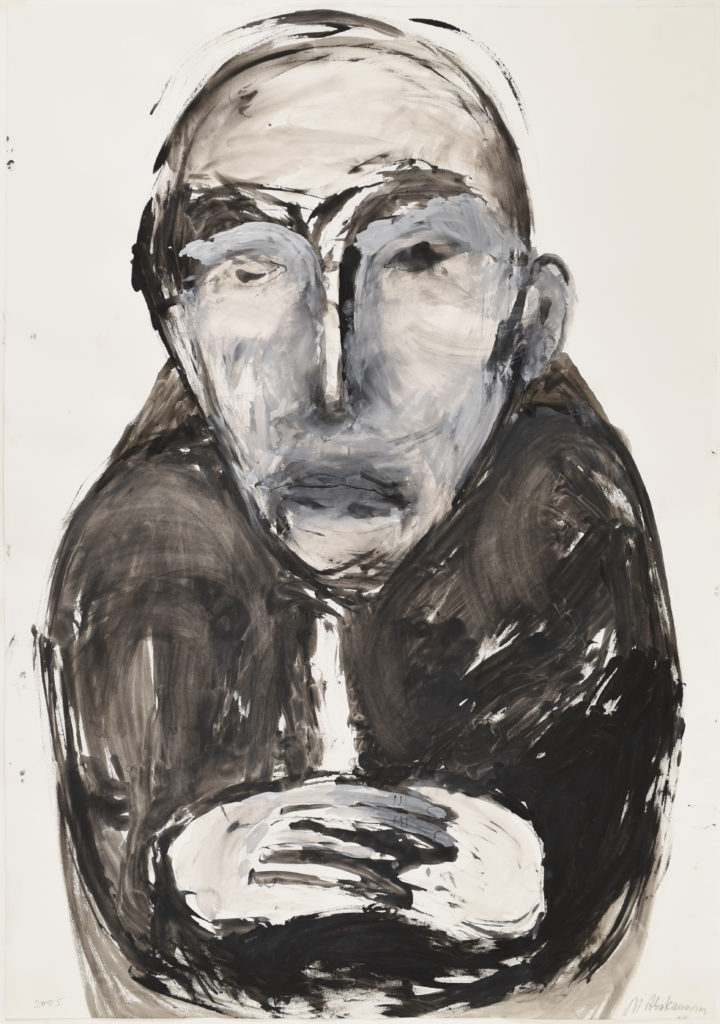On View
Magdalena Abakanowicz’s Haunting Sculptures to Take Over Polish City in Sprawling Retrospective
Her monumental works, synonymous with post-Communist Poland, will take over Wroclaw this summer.

Her monumental works, synonymous with post-Communist Poland, will take over Wroclaw this summer.

Alyssa Buffenstein

Wroclaw, the largest city in western Poland, will this summer host a sprawling retrospective of the work of influential Polish sculpture Magdalena Abakanowicz, who passed away in April.
Titled “Effigies of Life, A Tribute to Magdalena Abakanowicz (1930–2017),” the exhibition opens June 23 and features more than 200 that span the entirety of Abakanowicz’s career. The show was planned before her death; although she was too ill to be closely involved with its development, the show was organized in close consultation with her studio and features many works from her personal collection.
The main exhibition will be held at the city’s recently inaugurated public gallery at Dworzec Glowny PKP railway station. But the presentation will also spill out into other arts institutions and less traditional venues, from the Contemporary Museum of Wroclaw to the Starchowice Airport and the Bastion Ceglarski historic fortress.

Sculptures by Magdalena Abakanowicz, Walking Figures (2009), in Dag Hammarskjold Plaza in New York. Photo courtesy STAN HONDA/AFP/GettyImages.
The gallery at Wroclaw’s Public Library at Swidnickie Passage will present the monumental series War Games, while the massive bronze Walking Man will be installed in front of the Jewish Synagogue. The series Bambini, which comprises 83 pieces, will be presented in the square in front of the railway station.
The sculptor, known for her work with textiles, coined the term “Abakans,” after her last name, to refer to her earliest major works. While she began her artistic life with painting in the 1950s, her career picked up steam over the next decade, when she started to work with woven materials like sisal, unraveled and dyed from ships’ ropes.

Abakanowicz’s Faces which are not portraits no 2 (2004–5), gouache on paper. Courtesy of Marlborough Gallery, New York.
Her work came to be representative of postwar Poland. The daughter of nobles (who were supposedly descendants of Genghis Khan), Abakanowicz changed her name from Marta to Magdalena when Communism took over the country. To avoid persecution for her class, she assumed the fake identity of a clerk’s daughter.
“No other Eastern European artist had been able to capture so profoundly in form and content the essence of the human condition experienced by entire nations under communism,” co-curator Maria Rus Bojan says in a statement.

Magdalena Abakanowicz, Nierozpoznani in Cytadela, Poland. Photo courtesy Wikimedia Commons.
Bojan curated the exhibition alongside Mariusz Hermansdorfer, the former director of the National Museum in Wroclaw, who was also a friend and collaborator of Abakanowicz. The show’s sponsors include Irmina Nazar and Artur Trawinski, the founders of the European ArtEast Foundation.
“I think that if she left the country—and she had offers—other totalitarian movements would be reflected in her work,” says Hermansdorfer, who is also in the final stages of assembling a monograph of Abakanowicz’s oeuvre. “The capitalist world is also full of violence and influence, manipulation—it is art that shouts, speaking about human problems—about our problems.”
Effigies of Life: A Tribute To Magdalena Abakanowicz, Dworcowa Gallery and further locations across the city, Wroclaw, Poland, 23 June–25 August 2017